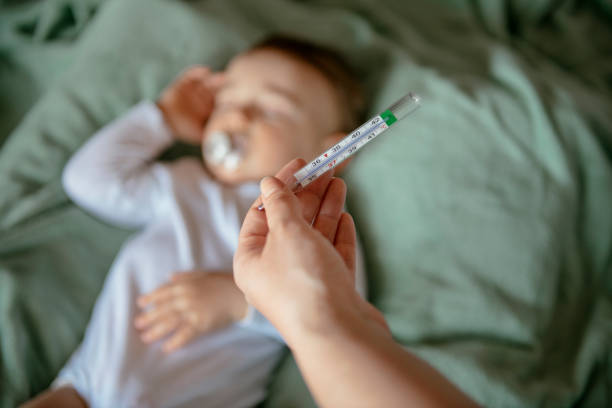Fever is a common symptom of many illnesses and it is usually an indication of the body’s natural response to fight infections. A fever can last for a few days, depending on the underlying cause. In this article, we will discuss the symptoms of fever for 4 days and the treatment for fever for 4 days.
Symptoms of Fever for 4 Days
A fever for 4 days is a common occurrence and can be accompanied by a range of other symptoms. Some of the most common symptoms include:
High temperature: A high body temperature is the most noticeable symptom of a fever. It can be measured using a thermometer and is usually higher than 100.4°F (38°C).
Chills and shivers: A person with a fever may experience chills and shivers, which can make them feel very cold even though they have a high body temperature.
Headache: A headache is a common symptom of a fever, and it may be accompanied by pain in the neck and behind the eyes.
Muscle and joint aches: A fever can cause muscle and joint aches, which can make it difficult to move around. This is often a sign of the body’s response to inflammation and infection.
Fatigue: A person with a fever may feel tired and weak, and may have trouble sleeping.
Nausea and vomiting: Nausea and vomiting are also common symptoms of a fever, and may be caused by the body’s response to the illness.
Sweating: A person with a fever may sweat more than usual, which can be a sign of the body’s effort to regulate its temperature.
Rash: In some cases, a fever may be accompanied by a rash, which can be a sign of an underlying condition.
Treatment for Fever for 4 Days
The treatment for a fever depends on the underlying cause of the illness. Here are some common treatments for a fever:
Over-the-counter medications: Over-the-counter medications, such as acetaminophen (Tylenol) or ibuprofen (Advil), can help reduce fever and relieve other symptoms.
Hydration: It is important to stay hydrated when you have a fever, as dehydration can make your symptoms worse. Drink plenty of fluids, such as water, sports drinks, and broth, to stay hydrated.
Rest: Rest is important when you have a fever, as it can help your body recover from the illness. Get plenty of sleep and take it easy until your symptoms improve.
Warm baths: Taking warm baths can help lower your body temperature and relieve other symptoms, such as muscle aches and fatigue.
Humidifier: A humidifier can help soothe a sore throat and cough, which are common symptoms of a fever.
Antibiotics: If the fever is caused by a bacterial infection, your doctor may prescribe antibiotics to help clear the infection.
When to See a Doctor In most cases, a fever will go away on its own after a few days. However, if your symptoms persist or get worse, it is important to see a doctor.
You should also see a doctor if you have a high fever (above 103°F), if you have a fever and a rash, or if you have other symptoms, such as a severe headache or chest pain.
In some cases, a fever may be a sign of a more serious underlying condition, such as meningitis, pneumonia, or sepsis, and prompt medical attention is necessary.

 Home
Home Health
Health Diet & Nutrition
Diet & Nutrition Living Well
Living Well More
More












